Lecture 12
Location Intelligence /
Recommendation
Network Science Institute | Northeastern University
NETS 7983 Computational Urban Science
2025-03-31
Welcome!
This week:
Location Intelligence and Recommendation in urban areas
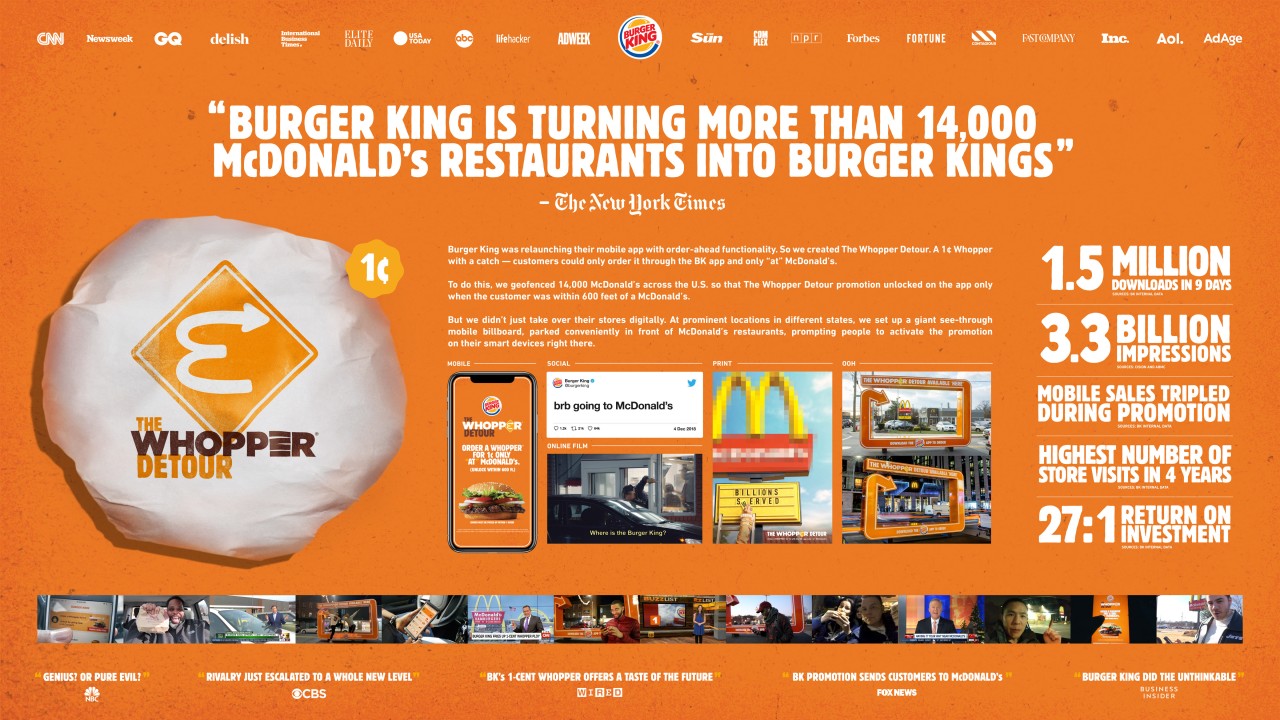
An example of a marketing campaign using geofencing by Burger King
You are here
Data -> Methods -> Models -> Applications.
Aims
Understand the concept of Location Intelligence and its applications in urban areas
Intro to Recommendation Systems and their applications in urban areas
Contents
- Introduction to Location Intelligence
- What is Location Intelligence
- Examples of Location Intelligence
- Sources of data for Location Intelligence
- Connection with Computational Urban Science
- Case study: Location Intelligence in Retail
- Recommendation Systems in Urban Areas
- What is a Recommendation System
- Types of Recommendation Systems
- Example: Recommendation of locations
- Case study: Recommendation of locations to visit in the city
- Conclusions
- Further reading
- References
Introduction
What is Location Intelligence
Location intelligence is the discipline for turning location data into business outcomes and insights.
Location intelligence goes beyond simple mapping and visualization.
It includes data management, analysis, modeling, prediction, data management, and visualization in an integrative way.
Main industries: retail, real estate, logistics, and transportation.
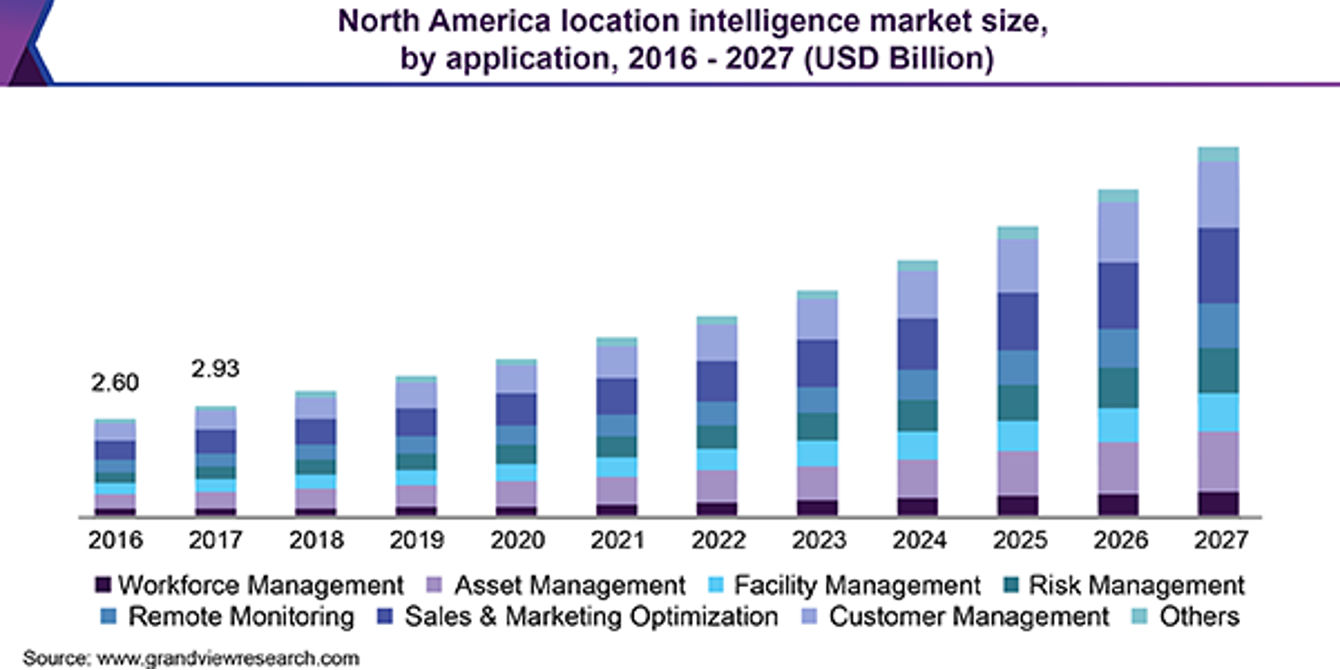
Projections of market size by application in Location Intelligence
What is Location Intelligence
Probably the first example of location intelligence was John Snow’s 1854 study of the spread of cholera. Snow put on a map the cases of cholera and the water pumps. That visualization helped to solve the cholera outbreak.
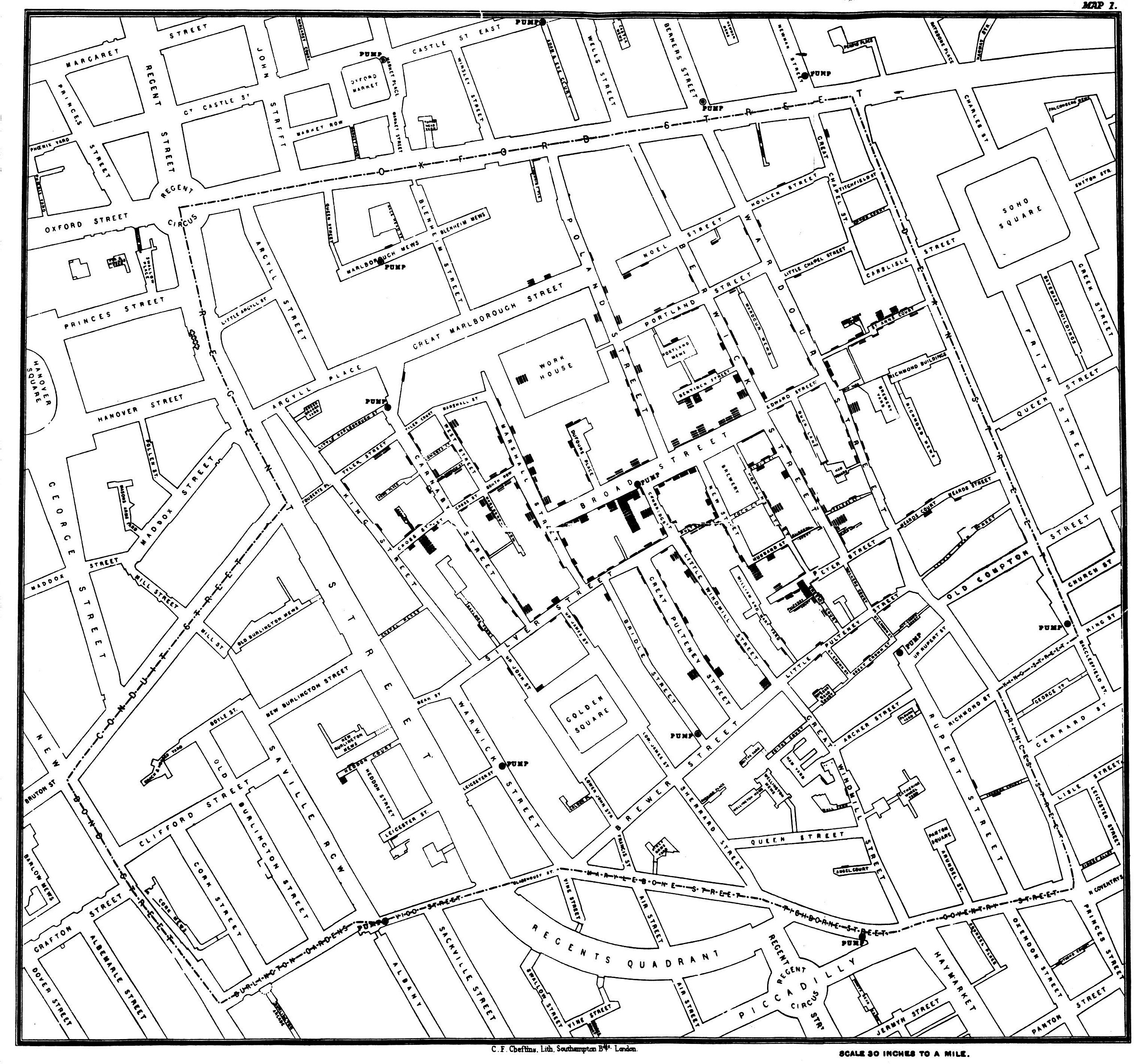
Examples of Location Intelligence
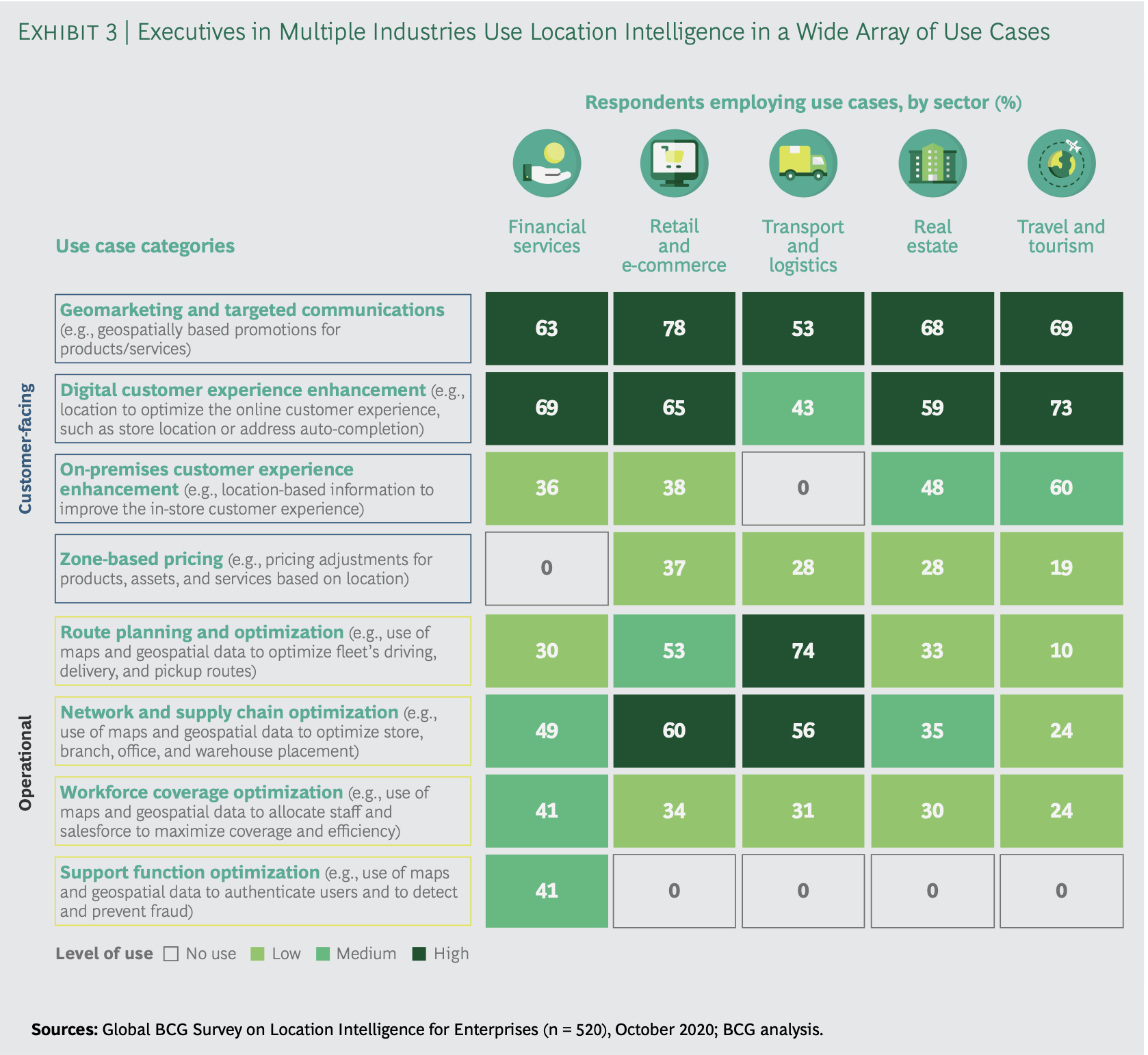
From Google Maps Platform report on LI
Examples of Location Intelligence
- Marketing & Customer Analytics: location intelligence can help retailers understand the demographics of the area, the competition, and the potential customers by using high-resolution location data and advanced models.
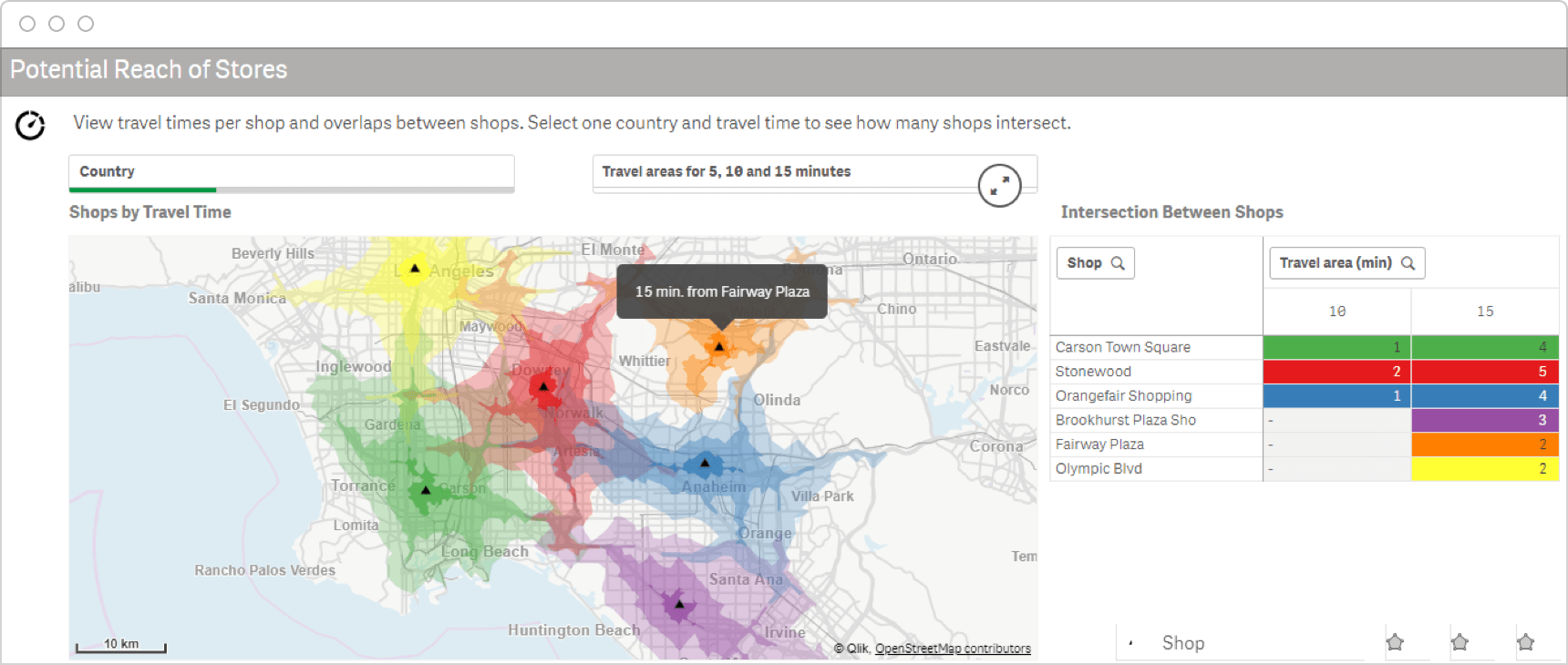
Store Site Selection from Qlik
Examples of Location Intelligence
- Geo-marketing: location intelligence can be used to identify the best locations/people for marketing campaigns, to understand the behavior of the clients, and to optimize the marketing strategies.

An example of a marketing campaign using geofencing by Burger King
Examples of Location Intelligence
- Commercial Estate: location intelligence can help to understand how clients interact with the space, how to optimize the use of the space, and how to improve the experience of the clients.
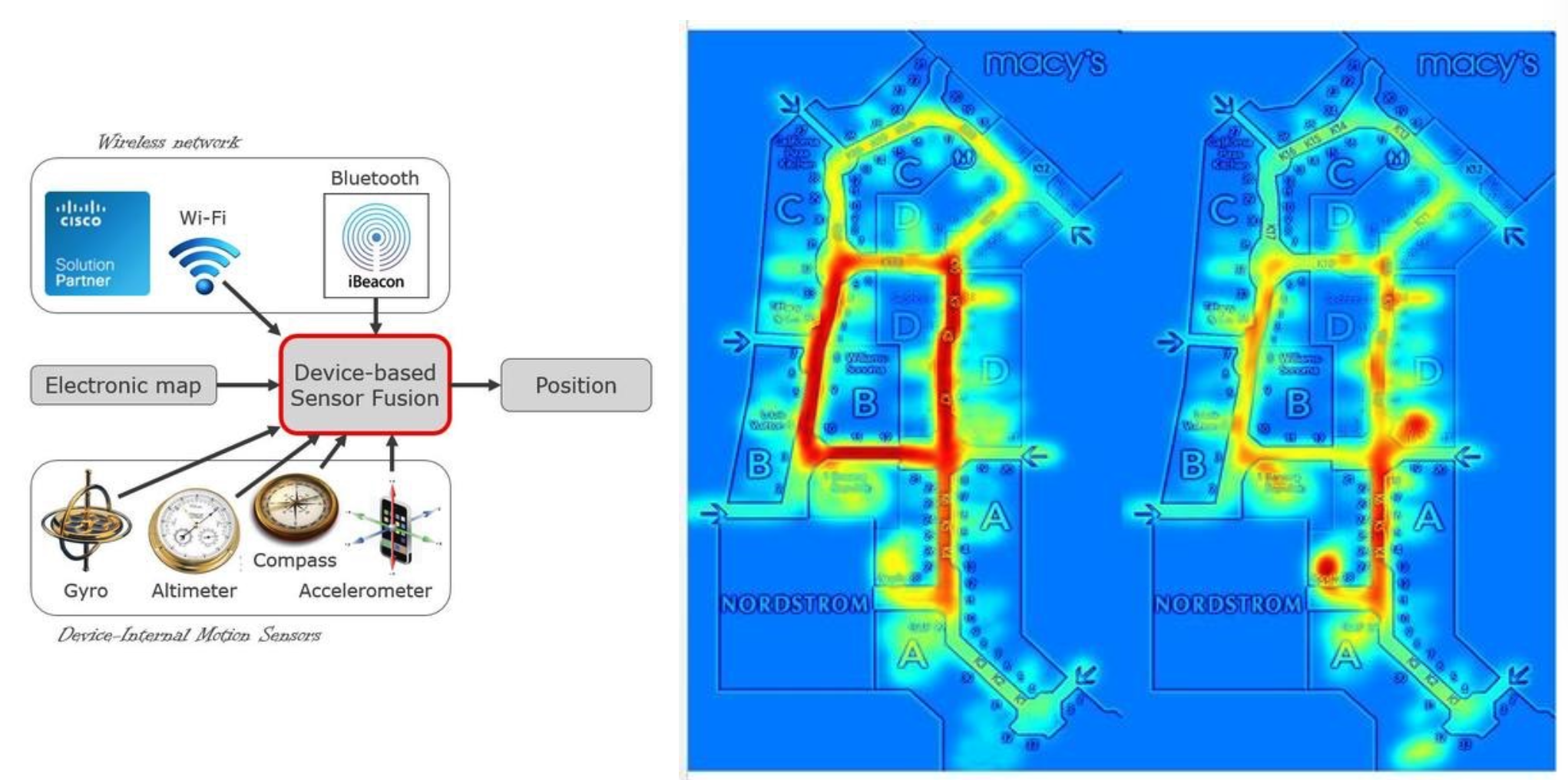
Use of location data in Commercial Estate
Examples of Location Intelligence
- Supply Chain & Logistics: location intelligence can help to optimize the routes, the use of the fleet, and the delivery times.
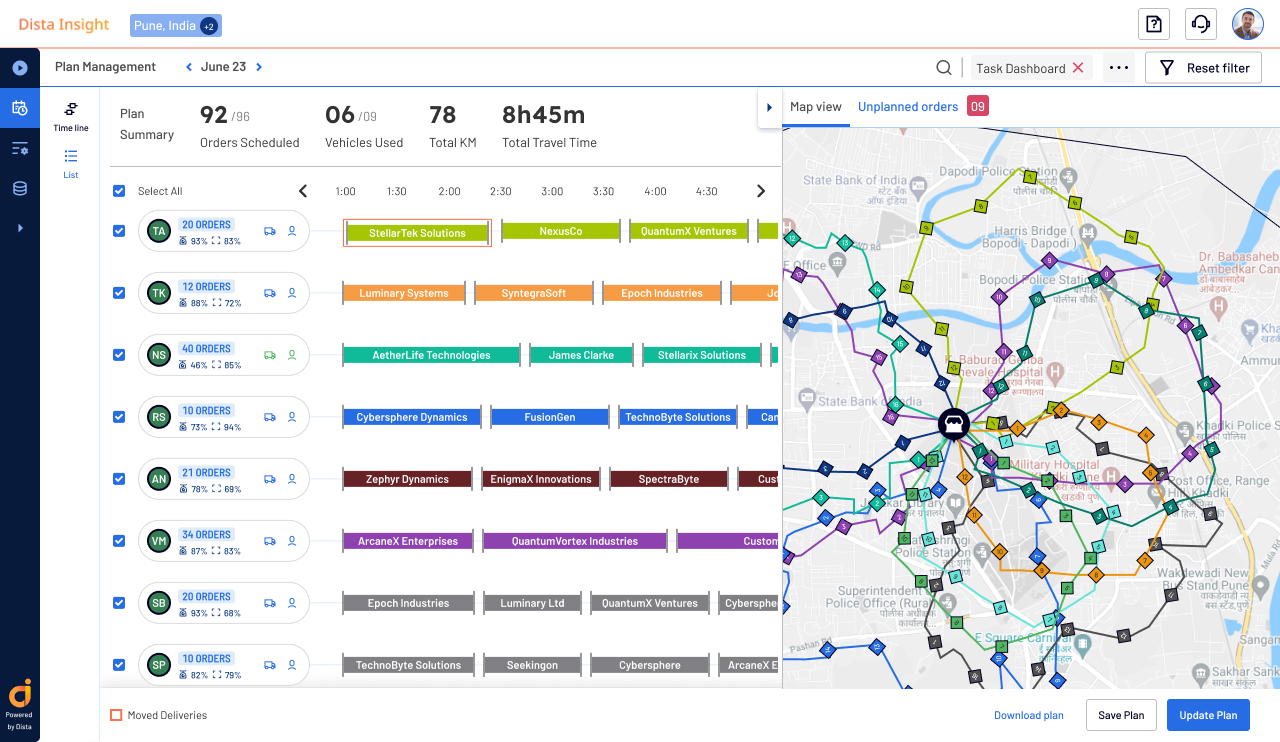
Use of location data in Logistics, from Dista.ai
Examples of Location Intelligence
- Risk Assessment: location intelligence can help to understand the risks associated with locations under flooding, natural risks, etc.
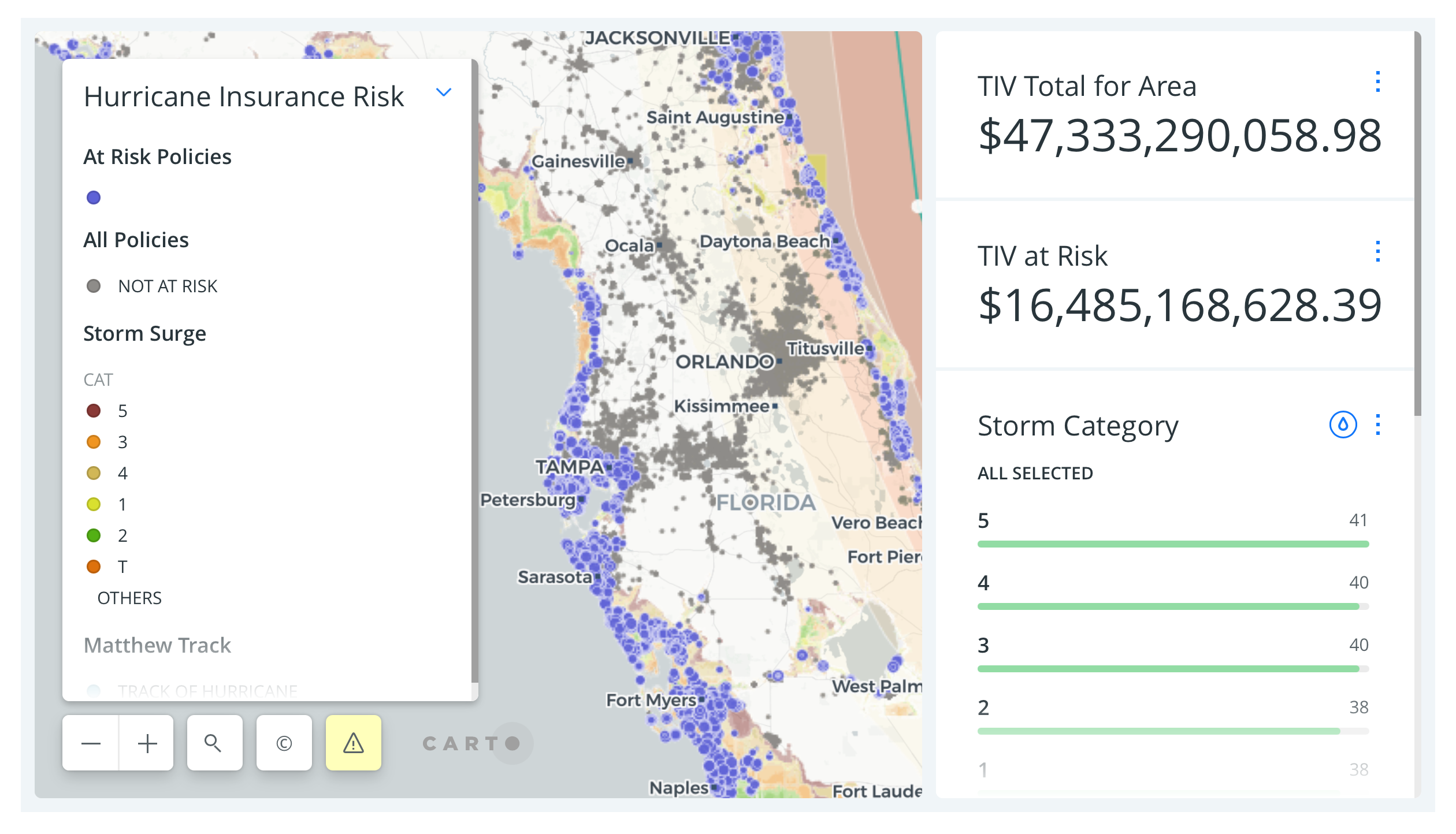
How Insurance Uses Location Data to Prepare for Natural Disasters, by Carto
Examples of Location Intelligence
- Fraud detection: location intelligence can be used to detect fraud by analyzing the location of the transactions, the spatial behavior of the clients, and the patterns of their transactions to detect anomalies
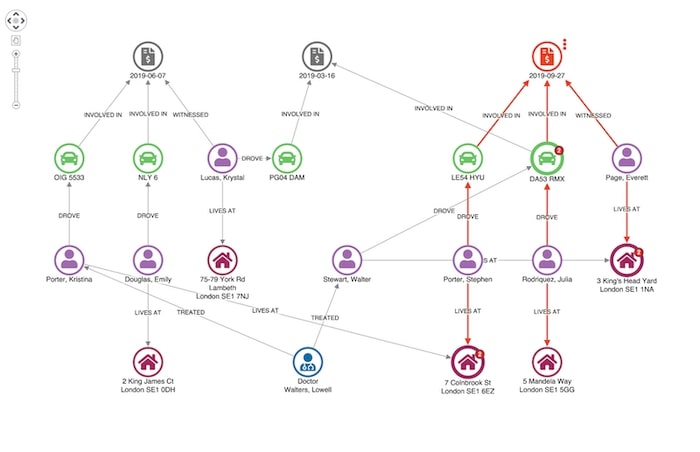
Fraud detection using location data by Cambridge Intelligence
Examples of Location Intelligence
- Urban Policies and Planning: location intelligence can help to understand the behavior of the citizens, the use of the space, and the potential improvements in the city.
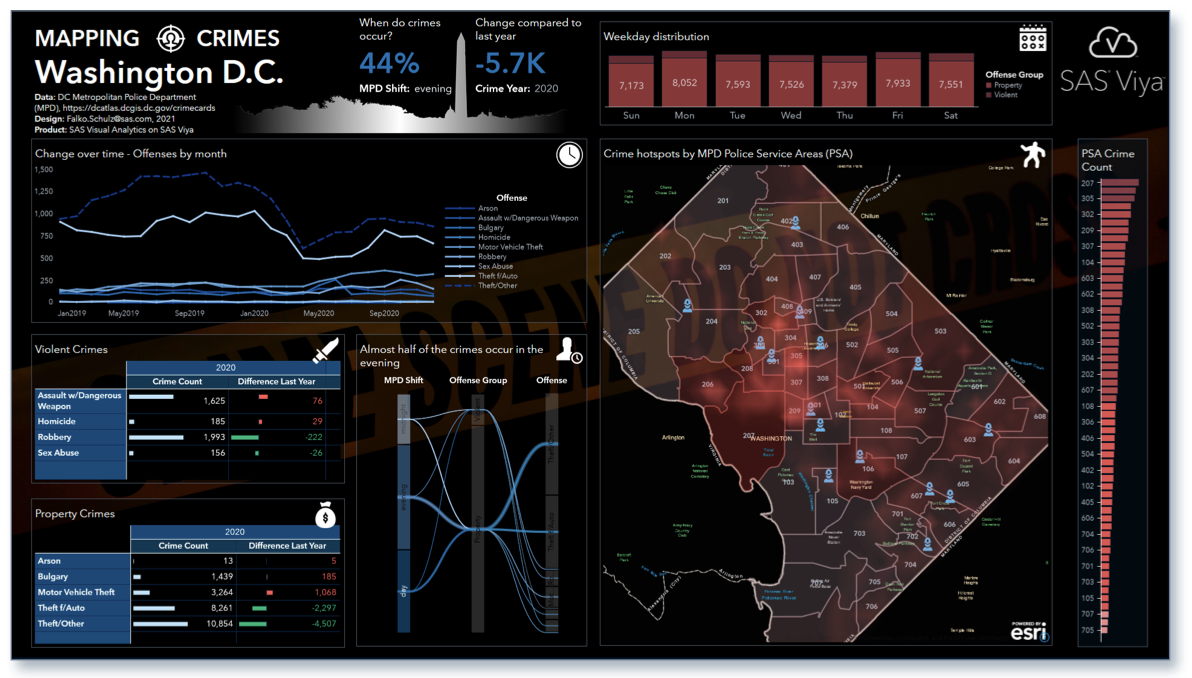
Mapping DC Crimes, by SAS
Sources of data for Location Intelligence
Mobile Devices & Apps: GPS-based data, user check-ins, location-based services
IoT (Internet of Things) Sensors: Traffic sensors, environmental monitors, smart city data
Satellite & Aerial Imagery: High-resolution data for land use analysis
Social Media & Open Data: Publicly available datasets (e.g., OpenStreetMap), user-generated geotagged content
Enterprise Data: Customer data, sales data, supply chain data
Sources of data for Location Intelligence
There is a market out there!
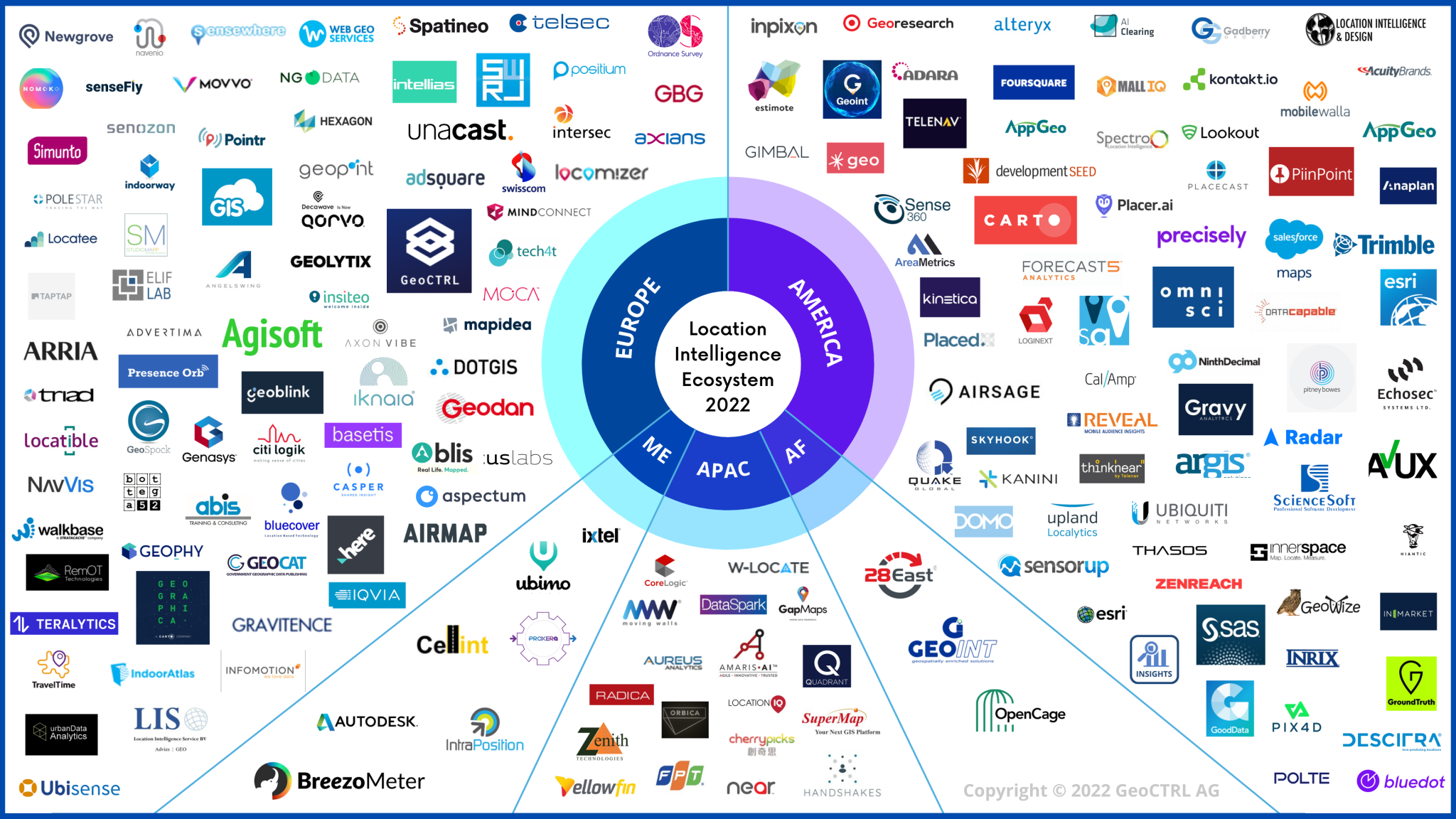
Location Intelligence Market, from Geoctrl
Connection with Computational Urban Science
Data Analysis & Visualization (e.g., spatial analysis, geospatial data visualization)
Machine Learning & AI (e.g., predictive modeling, recommendation systems, causal techniques)
Urban System Simulation (e.g., agent-based modeling, network models, individual decision-making models)
Big Data & Spatial Databases (e.g., managing and querying large-scale geospatial datasets efficiently)
Case study: Location Intelligence in Retail
(Geomarketing)
Scenario: a retail company wants to use location data to:
- Understand the demographics of the area where the stores are located, where their clients live
- Identify the best locations for new stores
- Optimize the marketing campaigns
- Understand the behavior of the clients
Case study: Location Intelligence in Retail
Data:
- Demographics from the census
- Satellite imagery to understand the land use
- Mobility data from mobile devices or transportation, census
- POIs (Points of Interest) about other businesses and competition
- Sales data from the company
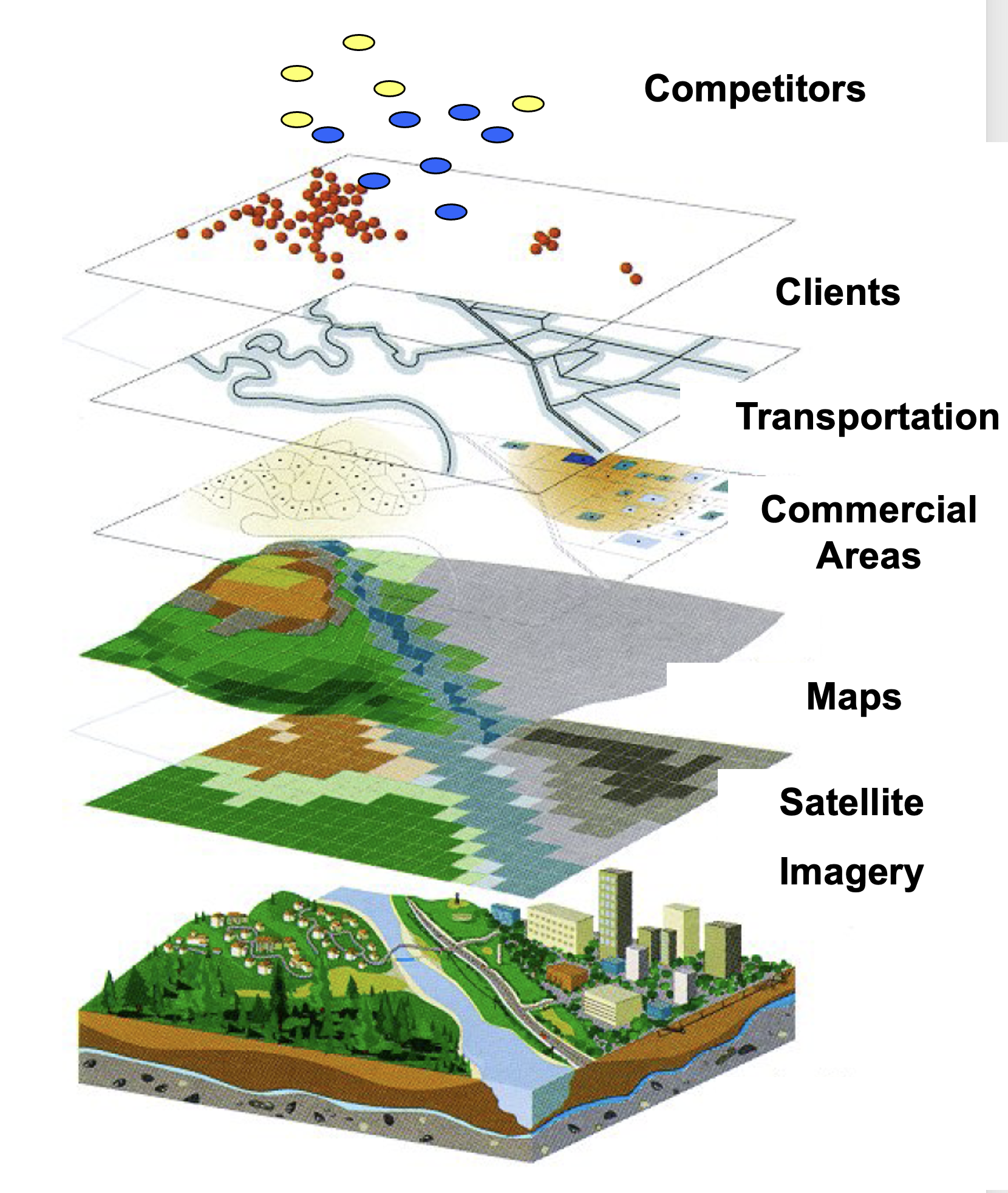
Case study: Location Intelligence in Retail
Methods:
Spatial analysis: clustering, hotspots, spatial autocorrelation to identify client segments
Mobility models: to understand the behavior of the clients and their decision-making process.
Machine learning: predictive models to identify the best locations for new stores
Recommendation systems: to optimize the marketing campaigns, suggest products, etc.
Recommendation Systems in Urban Areas
What is a Recommendation System
Recommendation systems are algorithms that suggest items to users based on their preferences, behavior, and context. [1]
They are widely used in e-commerce, social media, streaming services, and many other applications.
They are also used in Location Intelligence to suggest locations, products, services, etc. to clients based on their behavior, preferences, and context.
Recommendation algorithms are a fundamental part of the personalization of the services, design of policies, and optimization of the resources in urban areas.
Types of Recommendation Systems
Content-based: recommend items similar to those the user liked in the past. It uses the content of the items and the user’s profile to make recommendations.
For example, recommending cultural events in the city based on the user’s past preferences.
Collaborative filtering: recommend items based on the preferences of other users. It uses the preferences of other users to make recommendations.
For example, recommending restaurants based on the preferences of similar users.
Types of Recommendation Systems
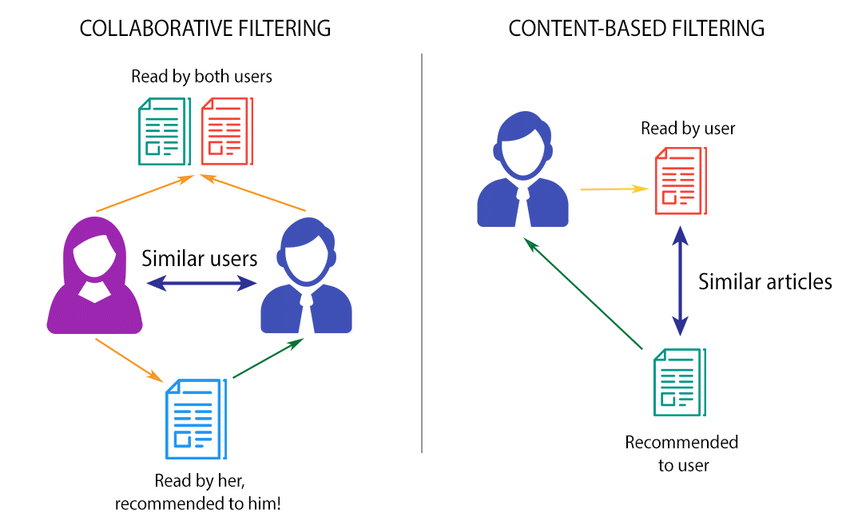
Example: Recommendation of locations
(Recommendation of locations) Scenario: a city wants to use recommendation systems to optimize the experience of the city’s citizens and tourists.
- Suggest cultural events to the citizens based on their preferences
- Suggest restaurants to visit based on the user’s behavior
- Suggest shops to visit based on the user’s preferences
Recommendation of locations is based on building a place recommender system that suggests places to visit based on the user’s preferences, behavior, and context.
Recommendation algorithms are typically built as “next-place prediction” models that predict the next place the user will visit based on their past behavior [2], [3], [4].
Example: Recommendation of locations
Next place prediction incorporates information about:
- The user’s past behavior (e.g., the places they visited)
- The context where the decision is made (e.g., the time of the day, the day of the week, the weather, the area)
- Information about similar users (e.g., the preferences of similar users, the behavior of similar users)
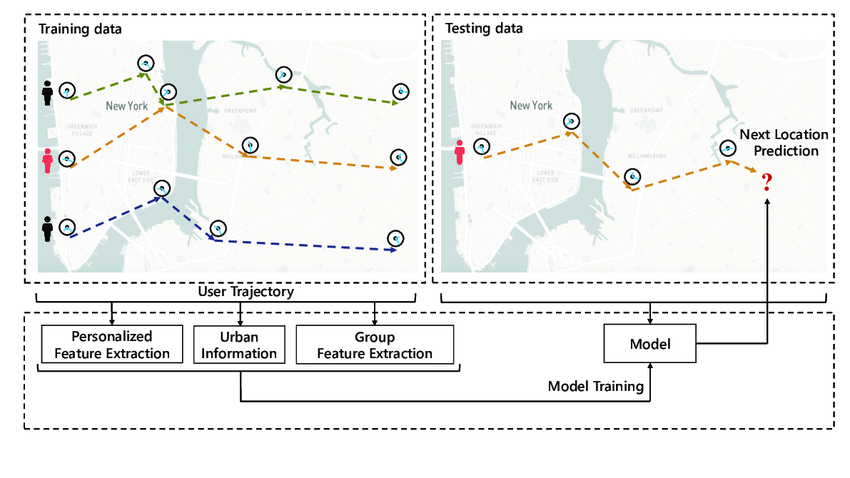
Example: Recommendation of locations
But we know a lot about human mobility!
Human mobility is characterized by repeating patterns and regularities that can be used to predict the next place the user will visit. Thus, simple individual models or content models can work very well.
Human mobility is also characterized by social influence and contextual information that can be used to predict the next place the user will visit. Thus, collaborative filtering models can work very well too.
Thus, recommendation systems in urban areas can be built using a combination of content-based and collaborative filtering models.
Case study: Recommendation of locations to visit in the city
Data:
- Mobility: Visits or check-ins of users in the past to different places in the city
- Demographics: information about the users
- POIs: information about the places in the city
- Transportation: information about the transportation system in the city
Case study: Recommendation of locations to visit in the city
Methods:
Machine learning: build predictive models to predict the next place the user will visit based on individual models (only using previous visits) and collaborative filtering models (using the behavior of similar users).
Evaluation: evaluate the performance of the models using metrics like accuracy @N, precision, recall, F1-score, etc.
Case study: Recommendation of locations to visit in the city
Models
- Content-based: recommend places based on the user’s past behavior and the content of the places. Since human mobility is very repetitive, just recommend previously visited places
Suppose that we have \(N\) places or events in the city and that \(\vec u_i\) is the vector where each component is the amount of times user \(i\) has visited any of those places up to time \(t\).
Then, the recommendation for the next place to visit is
\[ P(\text{next place} = \alpha | \vec u_i) = \frac{u_{i,\alpha}}{\sum_{\beta=1}^N u_{i,\beta}} \] (this is very similar to the preferential return in EPR)
Case study: Recommendation of locations to visit in the city
- Collaborative filtering: recommend places based on the behavior of similar users [5].
Find the \(K\) most similar users to user \(i\) based on their past behavior. We can use the cosine similarity between the users’ vectors to do this.
\[ \text{similarity}(i,j) = \frac{\vec u_i \cdot \vec u_j}{\|\vec u_i\| \|\vec u_j\|} \] Using the \(K\) most similar users, we can construct the vector
\[\vec u_i^* = \frac{1}{K} \sum_{j=1}^K \vec u_j\]
or the weighted version
\[\vec u_i^* = \sum_{j=1}^K \text{similarity}(i,j) \vec u_j\].
Case study: Recommendation of locations to visit in the city
Then, the recommendation of the next place to visit is
\[ P(\text{next place} = \alpha | \vec u_i) = \frac{u_{i\alpha}^*}{\sum_{\beta=1}^N u_{i\alpha}^*} \]
or choose to recommend only \(\alpha\) according to that probability which are not previously visited only.
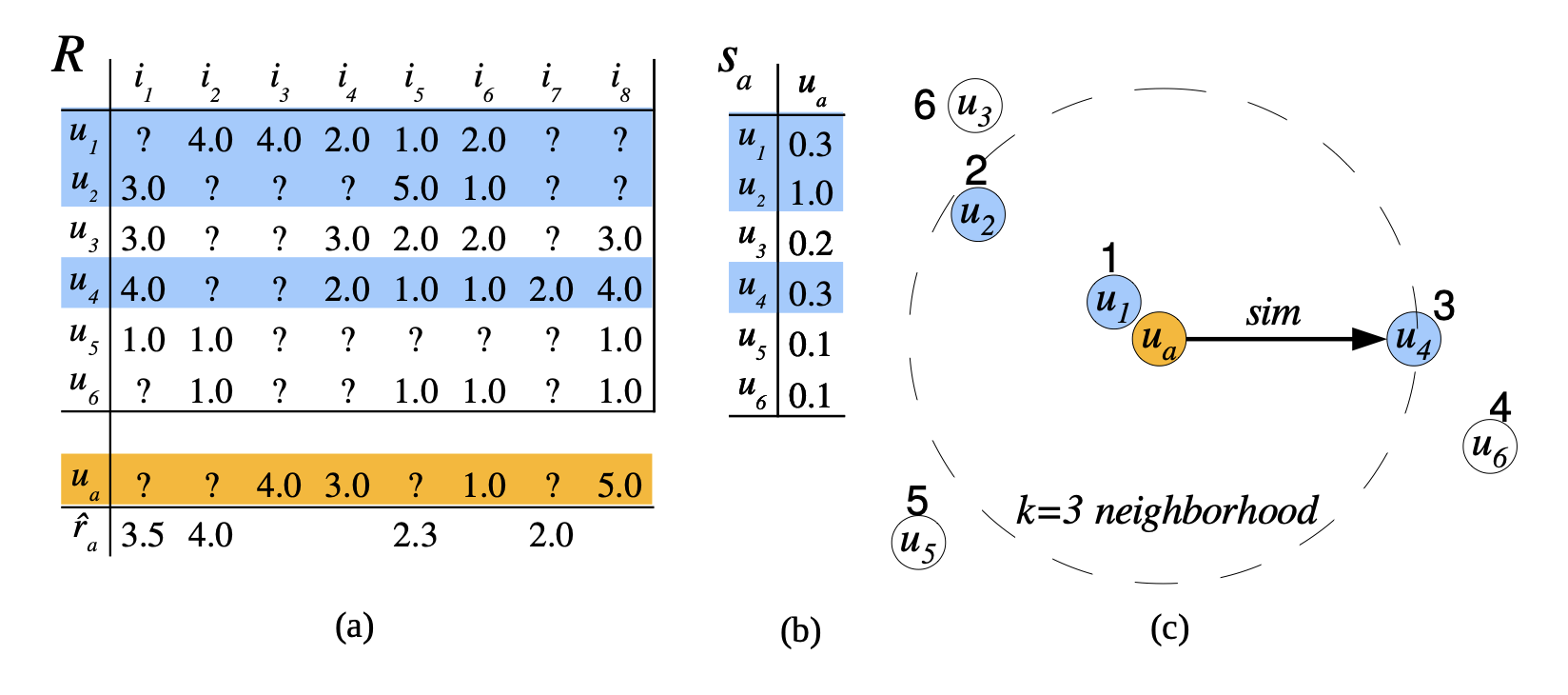
Collaborative filtering algorithm, from [5]
Case study: Recommendation of locations to visit in the city
Evaluation: We can evaluate the performance of the models using metrics like:
- Accuracy @N: the proportion of correct recommendations in the top \(N\) recommendations
- Precision: the proportion of correct recommendations in the total recommendations
- Recall: the proportion of correct recommendations in the total correct recommendations
- F1-score: the harmonic mean of precision and recall
Case study: Recommendation of locations to visit in the city
- Markov models: next place visited has a temporal structure. For example, visits after work are mainly to restaurants, services, etc. Thus, Markov models or temporal models can be used to predict the next place the user will visit. [6] [7]
For example, we can build a Markov model where the state is the place visited and the transition matrix is the probability of all users to visit place \(\alpha\) after visiting place \(\beta\).
\[ P(\text{next place} = \alpha | \text{current place} = \beta) = \frac{T_{\beta\alpha}}{\sum_{\gamma=1}^N T_{\beta\gamma}} \] Where \(T_{\beta\alpha}\) is the number of trips of users from place \(\beta\) to place \(\alpha\).
Case study: Recommendation of locations to visit in the city
- Deep Learning: because of the role of repetition, social influence, and context in human mobility, deep learning models based on attention are well suited to predict the next place the user will visit. [8]
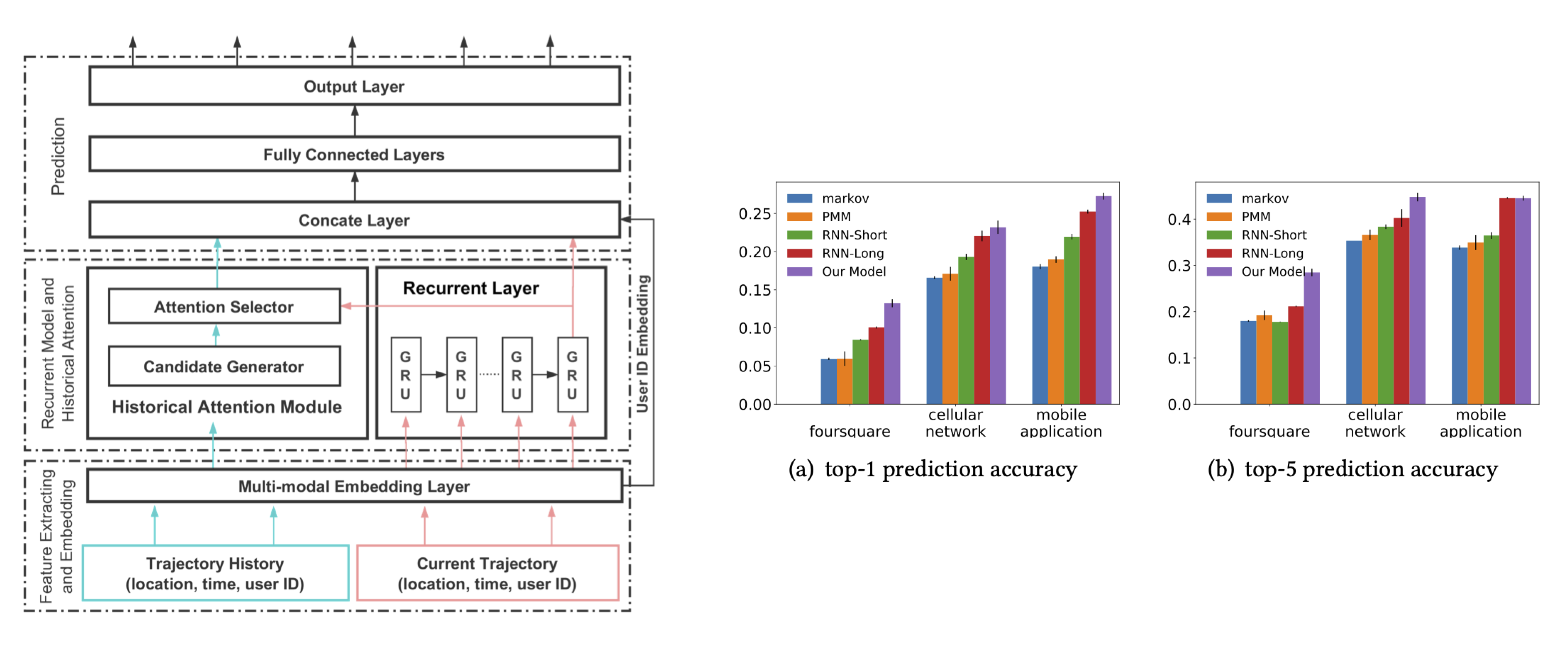
DeepMove model, from [8]
Conclusions
Location Intelligence uses the same methodologies as Computational Urban Science to turn location data into business outcomes and insights.
The main ingredients are data analysis & visualization, machine learning & AI, urban system simulation, and big data & spatial databases.
Recommendation Systems are algorithms that suggest items to users based on their preferences, behavior, and context. They are widely used in urban areas to suggest locations, services, products, and policies.
Further reading
Location Intelligence
The Big Book of Mobile Location Data Use Cases by Quadrant
Location Intelligence for dummies by Carto
Unlocking value with location Intelligence by Google and Boston Consulting Group
Further reading
Recommender systems
Recommender Systems Handbook by Ricci et al.
Recommendations in location-based social networks: a survey by Jie Bao et al. [2]
Mining user mobility features for next place prediction in location-based services, by Noulas et al [4]
Next place prediction: a systematic literature review, by Schreckenberger et al [9]
References

CUS 2025, ©SUNLab group socialurban.net/CUS